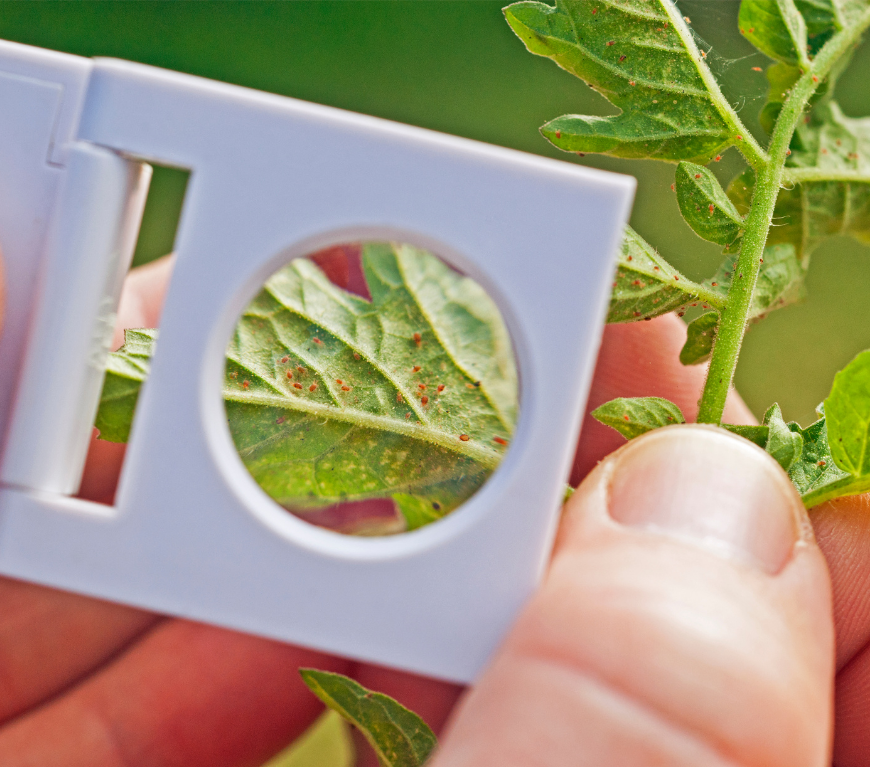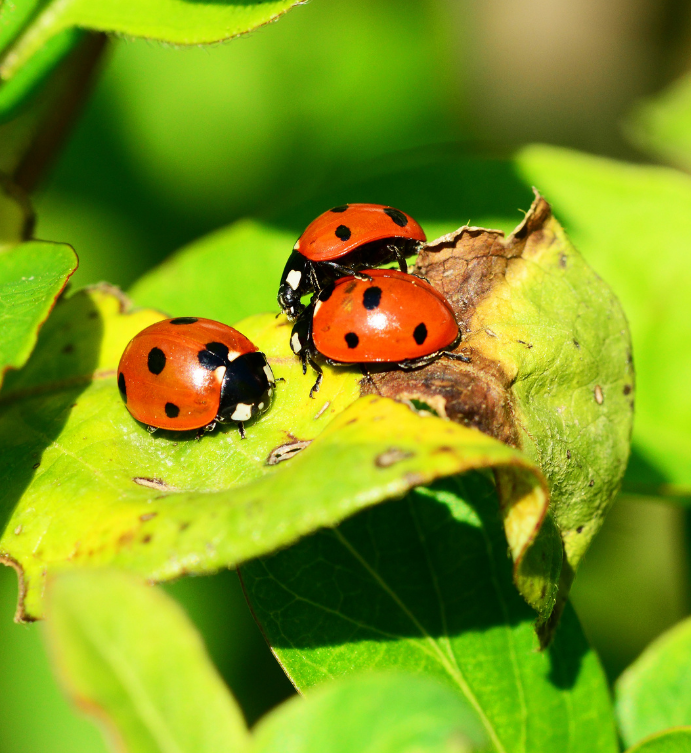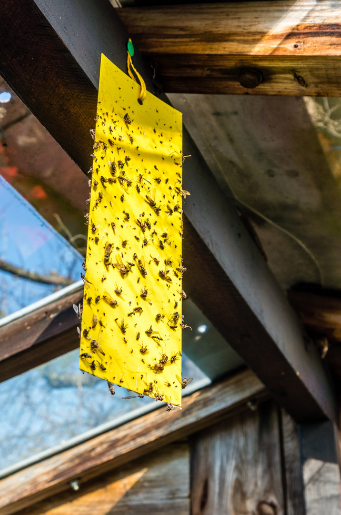Prevention is said to be better than cure, but the question remains, can you prevent and get rid of pests in house plants ?
My answer is straightforward, Yes and No.
Yes, because you can prevent plant infestation by taking certain precautions.
And No, because sometimes, it’s almost impossible to get rid of advanced infestations.
I know it is dishearting losing your plants to pests like fungus gnats, powdery mildew, Milley bugs, spider mites, leaf lice, etc. But when this happens, do not be discouraged. You could feel better if you accept such milestones as adventures. As you know, experience is said to be the best teacher.
Believe me, when I say I’ve had my fair share of fungus gnats, leaf lice, and mealybugs. Honestly, it’s not fun ! However, such occurrences have helped shape my plant journey. I lost a few plants along the way to infestation, but those that survived have fully recovered, thanks to natural remedies like Neem oil, garlic oil, and hydrogen peroxide.
Ok, enough with my babbling … but before we dive into a detailed explanation of the various ways to prevent and get rid of house plant pests, we’ll briefly take a look at some notorious ones. OR you could jump to Natural remedies that prevent and get rid of house plant pests and diseases.
1. Fungus Gnats
Most fungus gnats are small and flimsy fliers that possess an antifreeze protein and can be seen swiftly walking on the surfaces of potting mediums rather than flying. Airborne fungus gnats could become a nuisance, flying into the faces of humans or other living things, noses, and eyes. You may have experienced this when taking walks in thick forests or on a plantation of raffia palms.
Fungus gnats are attracted to the rotting roots of overwatered plants and some species of fungus growing on saturated topsoils. Surprisingly, they might be harmless to healthy plants but could severely damage seedlings.
So how can you prevent these prominent house plant beasts (Fungus gnat) ?
It’s easier said than done !
- Layer the top of your medium with indoor mulch, coarse sand, or rocks. The sand will prevent fungus gnats and give your plant set-up a beautiful finishing touch.
- Moisten your potting medium twice in a year with insecticidal soap or diluted hydrogen peroxide. Proceed by combining one part 3% hydrogen peroxide in four parts water. Use a can to uniformly spread the mixture on the potting medium to kill the larvae.
- Mature fungus gnats are attracted to yellow colors. Therefore you could use sticky yellow papers to trap them.
- You may also use fan-base traps or fly-killing devices to control their spread indoors.

2. Spider Mites
They are tiny (1mm sized) spider-like looking creatures that vary in color. Spider mites reside on the underside (sometimes upper surface) of the leaves of plants where they make their web. They usually lay transparent, spherical eggs that are difficult to detect with the naked eye. Growhouses and indoors are their favorite dwellings because the temperatures (27°C) are ideal.
Spider mites could become resistant to insecticides and pesticides, therefore you must:
- Regularly apply neem oil or use an insecticidal soap
- Apply Harpin Beta protein. It’s a process used to stimulate a plant’s natural defense system by encouraging the restoration of sap sugar levels and the replacement of damaged tissues.
- Use pesticides (Acarides). Acarides are a synthetic pesticide used to combat spider mites. However, they could become resistant in the long run. Avoid using them in Aquariums because they are potential toxins to fishes and other sea creatures.

3. Mealybugs
Mealybugs are tiny insects that thrive in warm and moist environments and are considered pests because of the severe damage they incur on plants. Males usually have wings and are gnat-like, while females are wingless.
They intelligently attach themselves to the plant, secreting a powdery wax layer, which they use as protection. The female mealybug feed on the sap of outdoor and indoor plants (residing in roots or fractures of the plant) and sometimes in the bases of stored fruits.
In nature, certain ant species live in symbiosis with mealybugs by protecting them from predators and feeding on their excrements (sweet honeydew).
This symbiotic relationship also accounts for their resilience and widespread.
So, how can you effectively prevent or eliminate mealybugs ?
It’s simple to prevent and get rid of an unadvanced infestation. The first thing you do is
- Expose the plant to the cold.
Unlike Fungus gnats that possess an antifreeze protein, mealybugs do not. Therefore a proven way to eradicate them is by placing the pests-riddled plant in the cold.
- Release predators like ladybugs on infested plants. It’s better to do this outdoors in the late evenings.
- Use Diazinon in severe cases but keep it out of reach of children.
- Use neem oil or garlic oil to prevent repeated occurrences in unadvanced stages. Repeat the process to increase the efficiency.

4. Root Mealybugs
These are species of bugs that solely dwell on the roots of plants. The newly hatched root mealybugs are white but appear brownish as they mature. They usually find their way into the roots of plants during the summer months when you take indoor plants outside. Plants with drainages are more susceptible.
Commonly, plants plagued with root mealybugs have a low chance of surviving. But if the problem is recognized and dealt with early, it may live.
So how do you revive a plant infested by root mealybugs
- Replace the potting medium of the plant. You proceed by carefully taking out the plant from the infested potting medium and getting rid of the soil. Pay attention to avoid damaging the roots, then wash them in running water. Wait for them to completely dry.
Finally, mist the roots with diluted neem oil and repot the plant in a fresh potting medium.
- Use Diazinon but keep it out of reach of children.
- Prevent the infestation by sealing drainages after watering your plants. If possible, suspend planters.
- Use horticultural oils (neem oil, garlic oil, lavender oil, etc.) by diluting them in water and spreading them twice yearly on your mediums.
5. Scales
Scales are tiny insects (1 – 2mm) that feed on the sap of plants and vary in appearance (Some look like oysters, others like mussel shells). They cause harm to plants by using their adaptive mouthparts to pierce into the tissues of plants while sitting on the spot and feeding on their sap. Their thick cottony cushioned bodies make them more resistant than other pests to insecticides. The females usually grow underneath thick wax covers and are almost motionless, while the males have legs and wings (resembling small flies).
Female scales will not only damage a plant by poking into its tissues, but they will also secrete honeydew that will promote the growth of fungus on the plants, thereby causing more harm.
Although scales are tough to control, these tips and tricks will help you eliminate them
- Wash infested plants in cold running water. The thick cottony cushioned waxy layer of the scales will not survive a proper wash in cold running water.
- Mist the plant with diluted neem oil or garlic oil to prevent further spreading.
- Briefly expose the plant to temperatures ranging from 5°C – 10°C.

6. Powdery Mildew
Powdery mildew is a fungal disease that affects both indoor and outdoor plants, with certain plants being more susceptible than others. A humid environment will promote their growth. But If you regularly check your plants, it will be easy to identify and treat the onset of a powdery mildew disease.
Its symptoms are unique and are usually whitish to greyish powdery spots/stains that often affect the lower surfaces of leaves and stems. Upper surfaces may sometimes be affected too. If the disease is left untreated, the spots will broaden and spread across the rest of the plant. At this advanced stage, it’s harder to revive the plant, and it might eventually die.
Fortunately, you could tackle powdery mildew both conventionally and unconventionally.
Some unconventional methods include the use of diluted milk, potassium bicarbonate, neem oil, sulfur oil, etc.
Also, quarantine the plant to prevent the fungus from attacking healthy plants.
Must-Do
Whether or not you decide to follow a conventional or an unconventional approach in handling plant infestation, you must do a follow-up to know how they respond to treatment. Please follow the directions to the letter to avoid causing more harm than good.
Furthermore, the tips below tackle specific pest problems. So, what might prevent or eradicate fungus gnats might not help against mealy bugs.

Natural remedies that prevent and get rid of house plant pests and diseases.
(We’ll also find out the various ways you can use them)
Neem Oil (excellent against fungus gnats, mealybugs, scales, powdery mildew)
Neem oil is a naturally occurring pesticide extracted from the neem tree that every gardener must have on his shelves. Also known to have healing properties that are beneficial to the skin and excellent for treating skin-related issues. It’s dark brown, tastes bitter, and has an unpleasant garlic-onion scent that could smell for hours at a time. Gardeners also use neem oil to prevent and kill a series of pests (Fungus gnats, scales, mealybugs, spider mites, and powdery mildew) affecting indoor and outdoor plants.
However, you must correctly dose neem oil to bolster its effectiveness. An overdosage could cause irreparable damages.

How to use neem oil to prevent and get rid of indoor plant pests / diseases:
Requirements:
- 10ml Neem oil (Infused neem oil is preferable)
- 250ml lukewarm water
- Spray bottle
- Any rag or cloth
Procedure:
- In a spray bottle, fill in 250ml of lukewarm water and then your neem oil. Shake and spray on affected leaves. Dry up the foliages with a cloth or rag to dry-clean leaves. If you are not satisfied, repeat the process.
Bottom line
Undiffused Neem oil is thick and will only dissolve better in lukewarm water. A stress-free option is to get diffused neem oil that will readily dissolve in water.
Using predators like Ladybugs (effective against mealybugs, root mealybugs, fungus gnats, spider mites, scales, other aphids).
I refer to ladybugs as ”the pest soldiers.”
Ladybugs or lady beetles are tiny insects that occur in several vibrant colors. You must be familiar with famous ones that come in red and orange with dark spots, but other species also exist in grey and yellow with black spots or no markings. Despite their minute differences in tone, they share some commonalities. Their larvae are alligator-like, and they all have six legs.
But as you know, ”Every coin has two sides.”
Some species are beneficial to your garden, while others aren’t. So, when buying them, go for those that will prey solely on pests, but will leave your plants in peace.
But what quantity of larvae will you need ?
Releasing predator ladybugs in your gardens or grow houses is a cautious and cheaper alternative to harmful conventional pest control methods. A ladybug can consume over 50 of them (mealybugs, spider mites, or fungus gnats) in a day. Quite a number for such a tiny creature, right ?
So to answer your question, you’ll need about a few hundred to thousands and a minimum of 5 larvae for a medium-sized plant.
Requirements:
– Ladybug larvae (the more, the better)
– 10ml diffused Neem oil
– Spray bottle
– 250ml lukewarm water
– Rag or cloth
Procedure:
Place your ladybug larvae into a cotton bag outdoors, then hang it on the affected plants and leave the mouth open for the ladybugs to make their way out.
Wait 48 hours, then check if your ladybugs had a great feast (I’m sure they did). If so, fill your lukewarm water and oil into a misting bottle. Mist the entire plant and dry it up with a rag or cloth.
An alternative is to mist the plant and let it dry out.
Bottom line
Release ladybugs between the months of May to September in the early mornings or late evenings. Temperatures between 10°C – 15°C are conducive. If it’s scorching, your ladybugs will fly away to seek shelter.
Furthermore, it’s advisable to create a ladybug-friendly garden by avoiding pesticides because they could be highly harmful to ladybugs. Also, create a pollen-bearing garden to attract and host wild ladybeetles.
Experts also advise gardeners to use ladybugs that prey on specific pests. For example, some species of ladybugs will solely prey on Fungus Gnats, while the others will prey on other scales.
Finally, if your indoor plants are infested, it’s best to bring them outdoors before releasing your larvae. Indoor conditions are unfavorable for ladybugs.

3. Using diluted natural Liquid Soap (effective against fungus gnats, scales, spider mites)
Using diluted liquid soap in conjunction with horticultural oils is an effective and safer pest control alternative for gardeners with kids or pets.
The horticultural oil and liquid soap mixture will kill and prevent fungus gnats, spider mites, and mealybugs by disrupting the cell membranes of these pests.
As known, fungus gnats are tough, so you have to repeat the process until you begin to notice improvements. Proceed with caution.
Requirements:
- A large bowl
- 15ml mild liquid soap
- 250ml lukewarm water (rainwater or distilled water)
- 1tbsp Neem oil
- Spray bottle
- Rag or cloth
Procedure:
In a bowl, combine water, liquid soap, neem oil) and pour into a spray bottle. Mist plant thoroughly and wait 30 minutes. Dry up the stems and foliages of the plant with a cloth or towel.
An alternative
- A large bowl
- 250ml lukewarm water (rainwater or distilled water)
- 100ml horticultural oil (garlic oil)
- 15ml liquid soap
- A spray bottle
Procedure:
In a large bowl, combine water and soap, followed by your favorite horticultural oil. Stir the mixture, fill it into your spray bottle, then thoroughly mist the affected plant and wait eight hours.
IMPORTANT:
- Prepare small portions for one-time use only
- Use different rags to avoid spreading to unaffected parts of the plants
- Repeat the process to achieve desirable results
- Avoid using this mixture on sensitive plants such as Maidenhair Fern, African Violets, Easter Lilies, Lantana Camara and Coleus.
4. Placing a sticky yellow flag to trap fungus gnats
Mature fungus gnats are attracted to yellow colors, so placing a sticky yellow paper close to the infested plant will trap them.
Requirement:
- A steady sticky yellow paper
Procedure:
Choose an area away from your plants and hang your sticky yellow paper.
Replace when the paper has become overcrowded.

Diluted Milk (effective against powdery mildew)
Discover the power of milk and its effectiveness to prevent the spread and growth of powdery mildew. I tried this on my powdery-mildew riddled Ivy, and it worked. The affected leaves slightly improved, and they didn’t spread to the other parts of the plant.
Requirements:
- 150ml milk
- 1l water (rainwater, distilled, or lime-free water)
- Spray bottle
- A jar or bowl
Procedure:
Combine the water and milk in a jar and pour into the spray bottle.
Continue to mist both the affected and unaffected parts of the plant. Don’t wash off the solution and repeat the process to achieve pleasing results.
Bottom line
The milk misting approach is most effective when the fungus hasn’t progressed. Please note that excessive use of milk mists could cause stunted growth in plants.
Please implement either of these natural methods if you’re dealing with an extreme infestation. It tackles pests such as fungus gnats, leaf lice, powdery mildew, mealybugs, scales, etc.
The first approach
Requirements:
- 150g Tansy Tea
- 10l water (cooked)
- Spray bottle
- A jar or bowl
Procedure:
In a jar, pour in tea and water. Let the tea infuse and cool down for 30 minutes. Fill tea into a bottle and mist plant, then let it evaporate.
Repeat the process if need be.
The second approach
Requirements:
– 1kg of fresh stinging nettle
– 10l water
– A spray bottle
– A large bucket or bowl
Procedure:
In a bowl, add the stinging nettle, pour in 10 liters of water, and wait 24 hours. Fill small batches into a spray bottle and mist plant.
Other pest control and prevention hacks
- Place a garlic clove into your plant. Watch out ! Your garlic clove might germinate. I tried out this hack, and my garlic plant sprouted.
- Grow insect and pest repelling plants. Some easy-to-grow outdoor pests repelling plants include Petunias, Alliums, Chrysanthemums, Marigolds, and Mosquito Plants.
- Grow herbs that repel pests. A few include basil, thyme, lemongrass, stinging nettle, lavender, basil, rosemary, and ginger.
- Quarantine-infested plants
- Shy away from indoor plants susceptible to pests. Some include Alocasias, Ivys, some species of Succulents, African Violets, Cyclamen, etc.
General takeaway
Unconventional and conventional methods may help you eradicate plant diseases and pests, still, it’s more efficient and stress-free to prevent them.
Although experience is the best teacher, you might want to save yourself the trouble and let your plant journey be a walk in the park.
I wish you the best in your journey ! 😉 🙂
Other articles and blog posts you find interesting.

3 Replies to “How to prevent and get rid of pests and diseases in houseplants”